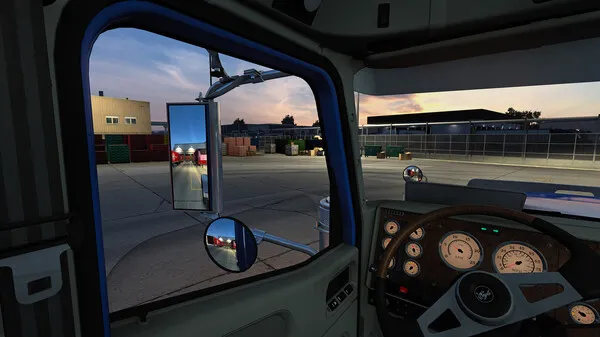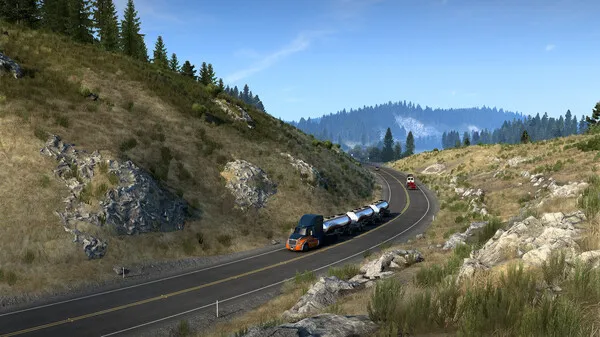American Truck Simulator (ATS) is more than just a driving game. It’s a detailed simulation of the trucking industry, combining logistics, business management, and immersive driving mechanics. Whether you're a newcomer or a seasoned player looking to refine your skills, this guide will walk you through every stage of mastering ATS—from setting up your profile to managing a fleet of drivers and trucks. Let’s hit the road.
1. Starting Out: Creating Your Profile and Setting Up Controls
Before you begin hauling cargo across the U.S., you’ll need to create a player profile. This includes choosing your avatar, company name, and starting city. Your starting location will determine your initial job offers and proximity to dealerships.
Next, configure your controls. ATS supports keyboard and mouse, gamepads, and full steering wheel setups. Choose what feels most comfortable and realistic for you. Don’t forget to adjust graphics, sound, and gameplay settings to optimize performance and immersion.
Tips for setup:
- Enable Route Advisor for navigation assistance
- Turn on realistic fuel consumption for challenge
- Adjust traffic density to match your skill level

2. Choosing Your First Truck: Rent, Lease, or Buy
In the beginning, you’ll work as a hired driver using company-owned trucks. This is a great way to earn money without upfront investment. Once you’ve saved enough, you can lease or buy your own truck.
Leasing is cheaper initially but more expensive over time. Buying gives you full control over customization and upgrades. Popular starter trucks include the Peterbilt 579 and Kenworth T680—both offer a good balance of power, fuel efficiency, and reliability.
Key features to consider:
- Engine power and torque
- Cab size and sleeper options
- Fuel tank capacity and range
3. Understanding Cargo Types and Job Markets
ATS offers a wide range of cargo types, each with its own handling requirements and payout rates. You’ll start with basic freight jobs and gradually unlock more specialized contracts.
There are three main job markets:
- Freight Market: Standard jobs using company trailers
- External Contracts: Online jobs via World of Trucks
- Cargo Market: Jobs using your own trailer
Start with short hauls to build experience. As you level up, you’ll unlock high-value cargo like hazardous materials, fragile goods, and urgent deliveries. Pay attention to trailer requirements and weight limits.
4. Driving Techniques and Road Safety
Driving a big rig is very different from driving a car. You’ll need to master braking, turning, and parking with precision. Obey traffic laws, use turn signals, and maintain safe distances to avoid fines and damage.
Practice backing up and parking trailers—these skills are essential for completing jobs. Use mirrors and camera angles to navigate tight spaces. Weather conditions like rain and fog affect visibility and traction, so adjust your driving accordingly.
Safety tips:
- Use cruise control on highways
- Check blind spots before changing lanes
- Rest regularly to avoid fatigue penalties
5. Skill Points and Driver Progression
As you complete deliveries, you earn experience points and level up. Each level grants a skill point that can be allocated to different categories, allowing you to specialize in certain types of jobs.
Skill categories include:
- Long Distance: Unlocks longer routes
- High Value Cargo: Enables premium freight
- Fragile Cargo: Requires careful driving
- Just-In-Time Delivery: Time-sensitive jobs
- Hazardous Materials: Dangerous but high-paying cargo
Focus on Long Distance and High Value early on to maximize earnings. Diversify your skill tree to access a wider range of contracts.
6. Managing Fuel, Repairs, and Rest
Fuel management is crucial for profitability. Plan refueling stops along your route and avoid running low. Repairs can be done at service stations—regular maintenance prevents breakdowns and improves performance.
Fatigue simulation adds realism. Drivers must rest at designated areas to avoid penalties. Use the Route Advisor to track fatigue and plan rest breaks. Ignoring rest leads to blackouts and failed deliveries.
Efficiency checklist:
- Refuel before long hauls
- Repair damage after accidents
- Sleep every 11 hours of in-game time

7. Expanding Your Business: Garages and Hiring Drivers
Once you’ve earned enough money, invest in garages to expand your operations. Start with small garages and upgrade them to accommodate more trucks and drivers. Each garage can house up to five vehicles.
Hire AI drivers from recruitment agencies. Assign them trucks and monitor their performance. Drivers level up over time, increasing your passive income. Diversify their skills to cover a wide range of job types.
Business strategy:
- Upgrade garages in strategic locations
- Hire drivers with balanced skill sets
- Track driver efficiency via the company manager
8. Using Mods and Customization
Mods enhance gameplay with new trucks, maps, weather systems, and UI improvements. Use Steam Workshop or trusted mod sites to find compatible content. Always check version compatibility before installing.
Customize your truck with paint jobs, accessories, and performance upgrades. Visit service stations or use the garage menu to modify your vehicle. Personalization adds immersion and pride to your fleet.
Popular mod types:
- Truck models and interiors
- Realistic weather and lighting
- Map expansions and traffic tweaks
9. Exploring the Map and Discovering Landmarks
ATS features a detailed map of the western United States, with iconic landmarks and scenic routes. Explore cities, highways, and hidden roads to unlock achievements and discover new job opportunities.
Use the free camera mode to take screenshots and appreciate the landscape. DLC expansions add new states and industries, enriching the experience. Plan your routes to include rest stops, fuel stations, and repair shops.
Exploration tips:
- Visit recruitment agencies and dealerships
- Unlock viewpoints for cinematic scenes
- Drive off the beaten path for hidden gems

10. Advanced Tools: Console Commands and Developer Camera
For advanced users, ATS offers developer tools like the console and dev camera. These allow teleportation, time manipulation, and error tracking. Use them responsibly to test mods or recover from bugs.
Activate the console by editing the config.cfg file in your ATS folder. Use commands like goto to teleport or g_set_time to change the time of day. The dev camera is ideal for taking cinematic screenshots or scouting routes.
Useful console commands:
- goto [city] – Teleport to location
- g_set_time [hour] – Change time
- g_flyspeed [value] – Adjust camera speed
Conclusion
American Truck Simulator is a rich and rewarding experience for players who enjoy simulation, strategy, and exploration. By mastering the fundamentals—driving, cargo management, business expansion, and customization—you can build a thriving trucking empire. Whether you play casually or dive deep into modding and management, ATS provides endless roads to travel and stories to create.
Stay disciplined, drive safely, and keep upgrading your skills and fleet. The journey from rookie to road king is paved with challenges, but with the right guidance, you’ll conquer every mile

















